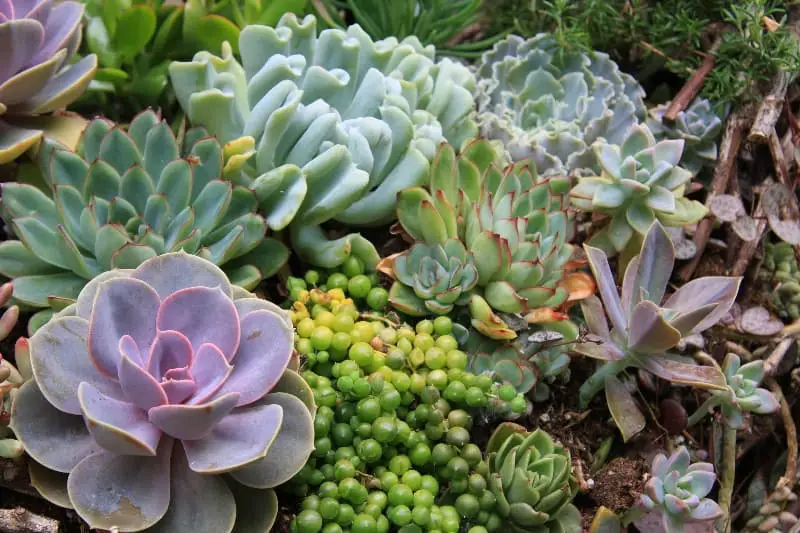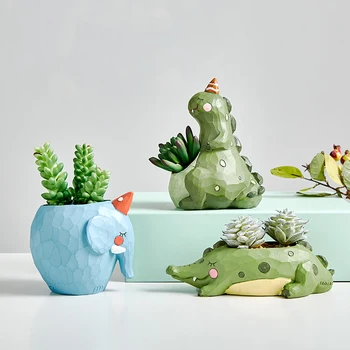Succulent plants are easy to maintain, create a bold statement and are suitable for great indoor plants. Weeping figs and aloe Vera are good examples of succulent plants as they elevate the beauty of your garden. But when those plants start to develop pigmentation and different kinds of spots, chances are they can spoil the beauty of your home.
That’s why you see many people keep buying fungicides to curb these problems. So, what do you think? Is fungicide the only option? I’m sure you might have been wondering, but that’s a no. There are many solutions or effective ways to prevent those black spots.
Today, we will walk you through several ways to prevent black spots on succulents. But before that, let’s quickly examine the six causes of black spots on your succulent plants.
We all know that watering succulent plants is essential for growth. On the other hand, overwatering can lead to fungal diseases, and it might be difficult to revive the dead leaves on these plants. When this happens, it’s always a good idea to apply the soak and dry watering techniques. See, succulents generally store water in their leaves, and with this factor, they would be able to survive arid conditions.
While sunlight is perfect for plants, too much of it can contribute to a problem. In fact, if you place your succulent plants in sunlight direction, it will create a difficult time for its growth. However, burned leaves are likely not to heal, but you can remove the ones that are infected and ensure others are safe.
Pest attacks can start from tiny little aphids to grasshoppers and snails. And, of course, more giant animals like kangaroos can also affect succulent plants. However, the kind of prevention you adopt would determine whether black spots would probably remain permanent or not. Moreover, controlling pests is hard; that’s why early detection seems to be the best practice.
If you check the plant and a black dot begins to appear near the bottom of your succulent stem, root rot will likely emerge. Sometimes, this could be a result of overwatering or pest infections. This way, the root rot might spread throughout the plants if not taken care of. So, ensure that you’re using the best soil (draining spoil) when planting your succulents.
Like sunburns, frost can be a problem if you stay in an environment with nothing less than 32 degrees or its equivalent to 33. More so, you might notice some dark spots that could affect the plants. In this case, it would be better to place the plants in a safer place. Not only that but avoiding frost causal factors plays a crucial role in preventing succulent plant damage.
21st-century viral diseases such as the black ring are one of the causes of black spots today. Also, these diseases can affect the plants in two ways. The first one is through insect infestation, while the other is by using infected grafting knives. Moreover, if your plants succumb to a virus infection like this, you need to ensure that black spots are prevented before they spread throughout the plants.

Regular inspections always help you detect succulent plant black spots. This way, eradicating the root cause in time can help save the infection from spreading. Additionally, 70% of isopropyl alcohol is what many people use and it always works great as a disinfectant to keep the diseases and pests from attacking the plants.
As mentioned earlier in this article, overwatering can contribute to plant damage. On the other hand, if you water the plants accordingly, you’ll get the best result. In fact, the best option is to feel the soil on your finger to understand its status.
Always keep your plants outside to get enough sunlight. This will ensure that the water on it is regulated which is also essential for growth. Meanwhile, plants with little to no sunlight tend to have a slight growth unlike when it receives water.
If you want to keep your succulent plants, maintaining proper temperature is essential. Moreover, the normal temperature you should expect is between 60 to 70 degrees Fahrenheit. Not only is that, but you need to put the plants indoors and avoid infections from pests through proper inspection.
While overwatering is one of the major causes of black spots, it’s essential to have enough drainage holes that are not blocked. Also, it prevents root rots in the future and would likely help the excess water in your succulent plants drain out.

As discussed earlier, there are many ways to avoid black spots. Some of these ways include; looking out for bugs, maintaining proper temperature, keeping low humidity, and many others, to mention a few. If these factors are considered, you’ll definitely have a better succulent plant.
Of course, when you notice that your succulent has black spots, it literally means that your plants have been affected. Sometimes, it could result from overwatering, but pest infections seem to be the causal factor. That’s why; you need to check the causes listed above to understand what could cause the black spots.
Fungus on any plant appears like a moist tan-coloured rot with red, orange, or pink bumps. They start small but rapidly expand throughout the succulent plant if you don’t take the necessary preventive measures.
Succulent plant black spots are a typical anecdote, and you can find a solution through different measures aside from the ones listed above. While treating the damaged succulent plants, understanding the causal factor can ensure that they’re safe. Nonetheless, always provide the best care for your succulent to get better growth.
You may enjoy these related articles:




We provide a platform supported by gardening enthusiasts to share unique experience and knowledge.
We’ve pledged 5% of sales to the program which help more families have opportunity to have garden.
Every action we make has an impact on planet. Learn more about Million Compost Movement.
Join facebook community to connect, share passion and get support when you need.
Keep in mind that we may receive commissions when you click our links and make purchases. However, this does not impact our reviews and comparions. We try our best to keep things fair and balanced, in order to help you make the best choice for you.
As an Amazon Associate, we earn from qualifying purchases.
Sign up for gardening tips, activism awareness, exclusive offers and more!
© Garden Guidepost

Gardening tips, activism awareness, exclusive offers and more!